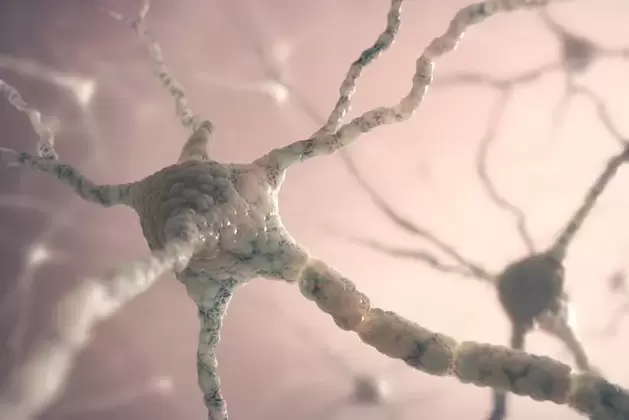
A good memory and a sharp mind are not natural human talents, but skills that can be developed and trained by children and adults. For this, there is a set of special exercises and methods aimed at increasing brain activity and synchronizing the functions of the brain hemispheres.
Brain training and human memory
Just like the body, the brain needs exercise. Many tasks used to create new neural connections gradually become routine and reduce the brain's ability to focus and concentrate on new things. The reason for this is the violation of interhemispheric interaction and the lack of their equivalent development.
A person's desire to learn new things, which forms new neural connections, helps normalize brain function. But the lack of "food" for the brain slows down the learning process, due to the deterioration of memory, lack of quick reactions and the ability to think creatively.

An effective way to restore and improve mental and cognitive abilities is to do special exercises to train the brain. Daily exercise helps improve brain activity and, as a result, a person's cognitive abilities, which include thinking, memory, speech, perception, imagination and attention.
Benefits
What are the benefits of gymnastics for the brain:
- concentration and reaction speed increase;
- memory improves;
- emotional resistance to negative factors increases;
- movement coordination improves;
- have more energy to complete daily tasks;
- hidden abilities of the brain are revealed;
- sleep quality improves.
Brain gymnastics is often prescribed by psychotherapists to treat neurosis, depression and emotional exhaustion. Exercise helps to shift from negative thoughts, distract yourself and restore one's productivity.

Weirdness
You need to train your brain throughout your life, starting from infancy and continuing into adulthood. In principle, gymnastics to improve memory and brain activity is the same for both children and adults, but has some features.
In adults
Forgetfulness, poor spatial orientation and a general decline in performance can be observed in everyone over the age of 20. Common reasons include bad habits, lack of sleep and irregular work schedules, which overload the brain with a lot of information. To normalize brain function and regain your intellectual sharpness, you need to reconsider your lifestyle, be physically active, can relax and spend 5 minutes a day on thematic exercises.
Also, adults should not forget the methods of brain development for children - fine motor skills training, learning poetry, retelling, etc.
In children
The level of development of interhemispheric connections determines the child's academic performance, proper coordination of movements, communication with peers, quality of speech and emotional intelligence. The development of new nerve nodes should begin at the age of 2-3 years, when the child's brain absorbs more energy than the brain of an adult.
The main and popular way to develop children's brains is through educational games that combine activities to improve hand-eye coordination, concentration and motor skills. In addition, the development of the same cerebral hemisphere is affected by:
- finger gymnastics;
- breathing exercises;
- logorhythmics;
- Listening to music;
- dancing;
- read and retell what has been read;
- creativity: modeling, painting, weaving, etc. ;
- self massage;
- kinesiology training;
- didactic games: comparing objects, guessing objects with descriptions, etc.
All this helps to improve interhemispheric interaction, which affects the formation of healthy self-esteem and the success of children. And the desire to learn new things can be a useful habit for a child that will help him throughout his life.
How to develop memory
Memory is closely related to other cognitive abilities that also require development. Therefore, its development should be approached holistically, doing special exercises and changing your daily life using other interesting ways, which we will consider later.
The best training
Classes must be conducted in a quiet environment. Training duration is from 5 to 20 minutes. It is also important to complicate the exercise by increasing the number of repetitions, adding additional gestures, movements and sounds.
For the brain
The following set of neurogymnastics exercises were developed by American psychologists Paul and Gail Dennison based on educational kinesiology.
Exercise 1. "Brain Button"
Exercise helps to "start" the brain and adapt to work.
- Stand up straight, back straight.
- One hand massages the depression between the first and second ribs in the left and right area below the collarbone. The other side is placed above the navel, which allows you to focus on the center of gravity.
Exercise 2. "Hook"
- Take any comfortable starting position: standing, sitting or lying down, crossing your ankles.
- Extend your arms forward, cross your palms towards each other and clasp your fingers.
- Turn your arms inward at chest level so that your elbows point down.
- Return to the starting position. Repeat 8-10 times.
Exercise 3. "Knee-elbow"
- Starting position: standing.
- Lift and bend your left leg at the knee.
- With the elbow of your right hand, touch the knee of your left leg. Then repeat the movement with your right leg and left arm. Do 8-10 repetitions.
Exercise 4. "Elephant"
- Starting position: standing, in a relaxed state. Knees are slightly bent.
- Tilt your head toward your shoulders. From this shoulder, extend your arms forward, like a trunk, and draw a horizontal figure of eight, starting from the center of the visual field, upwards and counterclockwise. Important: the eyes follow the movements of the fingertips.
Do the exercise slowly 3-5 times with the left hand pressed to the left ear and the same number of times with the right hand pressed to the right ear.
Exercise 5. "Mirror painting"
- Take a marker or pen in both hands.
- Mirror-draw numbers, letters, etc. symmetrically on a piece of paper with both hands at the same time.
Additional exercises to maximize the brain's involvement in work:
- "Palms. "Extend both arms in front of you. Clench the fingers of your left hand into a fist, straighten your right. Next, change the position of your fingers consistently, gradually speeding up your movements.
- "Winner". The finger of one hand shows the "V" signal, the other "OK". Alternate hands, gradually increasing speed.
- "Horns and feet. "One hand shows the horns, the other feet (thumb, index and middle finger). Alternate hands, gradually increasing speed.
- On one hand, connect the thumb sequentially with all the other fingers, starting with the index finger. Do the same with the other hand, but start with the little finger. Do the exercise with both hands at the same time.
- "Riddle". On one hand, bend all the fingers except the index and middle fingers, on the other - except the ring and little fingers. Connect them like a puzzle. Change hands, gradually speeding up the movement.
For memory
Simple and effective exercises to improve memory:
- Route map.Draw a map of the route you take to work. Try to remember everything down to the smallest details: street names, metro stations, bus stops, shops you find along the way.
- Alphabet.Quickly generate words for each letter of the alphabet.
- Magician.For this exercise you will need a deck of playing cards. Shuffle and remember the order of the first 3-5 cards from the deck. Shuffle the deck and look for this card.
- A carbon copy.Find any image on the Internet or take a banknote. Study the picture for one minute and draw what you see on a piece of paper from memory. Then check the drawing with the original to identify any missing details.
- Remember a school poem or learn your favorite song. It is also good for memory training.
- Before going to sleep, remember the people and objects that surround you. If you attend a lecture, try to reconstruct all the material in your head.
- Take some objects. Look in detail for one minute. Then turn away from the subject and try to explain it by writing a detailed review.
Another method
In addition to special exercises, there are other useful ways to activate the brain and improve memory:
- Always learning new things.Minimal load on the brain and lack of new information leads to deterioration of memory and other cognitive abilities. Also, diverting your attention to something unrelated to your work helps develop stress resistance. The best options are learning foreign languages, online courses, handicrafts, etc.
- Play mind games, solve crosswords, puzzles. This will help keep your mind clear and broaden your horizons.
- Get out of your comfort zone.For example, take a different route to work, take up a hobby that you are afraid of, actively meet and communicate with people in real life.
- Involved simultaneouslyboth hemispheres of the brain. Brush your teeth, eat, open doors, hold handles with your non-dominant hand.
- Read, write by hand.Reading trains memory, activates imagination and creative thinking. And handwriting is a great way to develop motor skills.
Equally important is being able to rest. Avoid sleep deprivation and learn to meditate. The brain needs relaxation and rest.
Products for memory and brain development
To keep your brain active, it is important to monitor your diet. A healthy daily diet should contain protein, healthy fats and complex carbohydrates. You can also include the following products in your menu that support brain activity:
- Fatty fish.A source of unsaturated fatty acids Omega-3, which affects the active saturation of brain cells with oxygen and nutrients.
- bitter chocolate.Chocolate with 70% cocoa slows age-related mental decline and prevents cognitive impairment.
- Eggs. Egg yolks contain choline, which the body uses to create the neurotransmitter acetylcholine, which is responsible for memory and mood.
- Whole grain breads and cereals.Cereals boost metabolism, fill you with energy and improve blood circulation in the brain, thanks to their vitamin B6 content.
- tomatoes.A source of melatonin, which prevents the aging of brain cells and improves the condition of blood vessels.
In addition, for active brain activity, it is important to maintain fluid balance by drinking enough drinking water every day.
Prevention
For a clear mind, good memory and active brain function are important:
- Get rid of bad habits.Smoking, alcohol and taking psychotropic substances affect blood circulation in the brain, causing oxygen starvation and neuronal death.
- Road.A daily walk fills the brain with oxygen and helps develop concentration and memory.
- Exercise.Physical activity improves blood circulation, helps improve memory, movement coordination and improves health.
- Give it to the brainuniform loadand don't forget about rest.
- Maintain good sleep hygiene.Sleep at least 7-8 hours. Sleep is necessary for the brain to rest, strengthen the necessary and destroy unnecessary nerve connections.
The most important thing is to practice every day. Only regular exercise will give the desired results.






































































